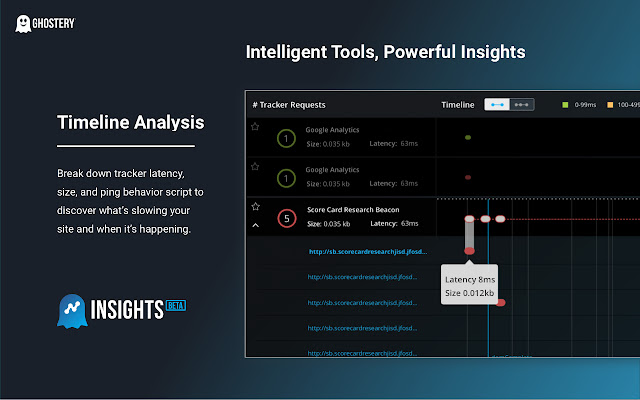How is RSI Calculated? A Deep Dive into the Relative Strength Index
If you’ve spent any time trading or investing, you’ve likely encountered the term RSI — Relative Strength Index. Whether you’re trading forex, stocks, cryptocurrencies, or commodities, understanding how RSI is calculated and how it can impact your trades is crucial. In this article, we’ll break down the RSI, its function in technical analysis, and why it’s a go-to tool for so many traders in a wide range of markets.
Understanding the RSI: What It Is and How It Works
The Relative Strength Index (RSI) is a momentum oscillator that measures the speed and change of price movements. The key takeaway? RSI helps traders identify whether an asset is overbought or oversold, providing signals for potential buy or sell opportunities.
But how exactly is this calculated? The formula behind RSI is a bit math-heavy, but the concept is simple. It’s based on the average gains and losses over a specific period, usually 14 periods, to give a percentage value between 0 and 100. Here’s the breakdown:
- RSI Formula:
- RSI = 100 - (100 / (1 + RS))
- RS (Relative Strength) = Average Gain / Average Loss over the specified period (usually 14 periods).
The RSI is often charted as a line, oscillating between 0 and 100. When the value reaches 70 or above, the asset is considered overbought, suggesting a possible reversal or pullback. When it’s below 30, the asset is considered oversold, signaling a potential opportunity for a price bounce.
Key Features and Benefits of RSI in Trading
1. Identify Overbought and Oversold Conditions
The primary function of RSI is to signal when an asset is potentially overbought or oversold. This can guide traders in deciding when to buy or sell:
-
Overbought (RSI above 70): Traders interpret this as a sign that the asset might be due for a correction. For example, if a stock surges rapidly, hitting an RSI of 85, many might see this as a cue to short the stock or prepare for a pullback.
-
Oversold (RSI below 30): On the flip side, an RSI below 30 indicates that the asset might be oversold, often hinting at an opportunity to buy. A drop in RSI might mean that fear or pessimism has driven the price down too far, too fast, opening up the chance for a reversal.
2. Divergence – A Powerful Indicator
Traders also look for divergence between price action and the RSI. This happens when the price makes new highs or lows, but the RSI fails to mirror these movements. Such divergence can signal weakening trends or potential reversals, offering traders an early warning sign.
For instance, imagine a stock making new highs, but the RSI fails to break above its previous peak. This might signal that the momentum behind the uptrend is weakening, and a reversal might be on the horizon.
3. Support and Resistance Levels on the RSI
Just like price charts, the RSI itself can have key levels that traders watch. While RSI fluctuates between 0 and 100, the 50 level is often viewed as a neutral zone. A rise above 50 may indicate an uptrend, while a drop below 50 could signal a downtrend.
Additionally, traders often draw horizontal support and resistance lines on the RSI chart, just like they would on price charts. This helps identify key turning points and potential breakout opportunities.
The Advantages of Using RSI in Multiple Asset Classes
RSI isn’t limited to a single asset type. It can be applied to forex, stocks, crypto, indices, commodities, and options trading. Here’s a look at why it’s such a versatile tool:
Forex Trading
In the world of forex, where currencies are constantly moving, RSI can help traders find entry and exit points. Given the 24-hour nature of forex markets, RSI can provide quick feedback on whether a currency pair is overbought or oversold, helping traders act on short-term price movements.
Stock Market
For stock traders, RSI helps identify the momentum behind a particular stock. Whether youre looking at blue-chip stocks or small-cap growth stocks, RSI can offer a glimpse into whether a stock’s price movement is sustainable or nearing a reversal.
Cryptocurrency Trading
When it comes to crypto, where volatility is often the norm, RSI can be especially helpful. In the fast-moving crypto markets, RSI helps traders stay alert to potential price swings. Whether it’s Bitcoin, Ethereum, or altcoins, RSI can guide you through the unpredictable waters of crypto.
Indices and Commodities
For those trading broader indices like the S&P 500 or commodity markets (oil, gold, etc.), RSI provides a useful gauge of market sentiment. If an index is at overbought levels, traders might prepare for a market correction. Similarly, RSI can highlight key turning points in commodities, where price action can be more erratic.
The Evolving World of Prop Trading
Proprietary (prop) trading, where firms trade using their own capital rather than client funds, is on the rise in many financial markets. The development of decentralized finance (DeFi) and blockchain technology has added a new layer of complexity and opportunity to this space. Traders using RSI in prop trading can leverage this tool for precision entry and exit points, helping them maximize profits while minimizing risk. The landscape is shifting, and those who adapt quickly to technology-driven strategies—like automated trading systems that use RSI—may gain an edge.
What to Watch Out For When Using RSI
While RSI is a powerful tool, it’s not foolproof. Here are a few considerations to keep in mind:
-
False Signals: RSI can sometimes give false signals, especially in strong trends. If an asset is in a strong uptrend or downtrend, it might stay in the overbought or oversold zone for an extended period. Traders should use other indicators to confirm RSI’s signals.
-
Short-Term vs Long-Term: Traders should adjust the RSI period to fit their trading style. For short-term traders, a 7-day RSI might work better, while long-term investors might prefer a 21-day RSI.
-
Market Context: Always consider the broader market context. RSI doesn’t work in isolation; it should be combined with other indicators like moving averages, MACD, and price action to get a fuller picture.
The Future of Trading: AI and Smart Contracts
As artificial intelligence and machine learning continue to evolve, expect RSI and other technical indicators to be integrated into AI-driven trading platforms. These systems can quickly analyze vast amounts of data, making trades based on RSI signals combined with other factors—potentially leading to faster and more accurate decision-making.
In addition, the rise of smart contracts and DeFi will likely change how traders use RSI and other indicators. By automating trades through decentralized platforms, traders can execute RSI-based strategies without having to manually place orders. The decentralized nature of these platforms could increase transparency, reduce fees, and lower the barrier to entry for new traders.
Conclusion: Maximize Your Trading Edge with RSI
Understanding how RSI is calculated and how it can enhance your trading strategy is key to navigating the modern financial markets. Whether you’re a forex trader, a stock market investor, or someone involved in the crypto or commodities space, RSI offers a reliable method to gauge market conditions.
As the financial world continues to evolve with AI, smart contracts, and decentralized finance, RSI remains an essential tool for traders. So, the next time you pull up a chart, take a moment to analyze the RSI—its not just a number; it’s a powerful indicator that could help guide your trades in the right direction.
Trade smarter with RSI—your guide to reading the market’s pulse!




